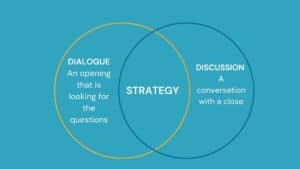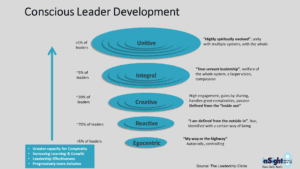Building on a previous newsletter about The Unexpected Spiritual Awakening of a Tech Executive, this month we’re diving deeper into why, in a world increasingly influenced by AI and growing complexity, there’s a big call for a more profound and embodied leadership approach.
In a landscape where AI can outperform humans in data analysis and routine decision-making, this new era calls for leaders who can integrate the depth of human intuition, the principles of unity, and somatic wisdom to guide their organizations through uncharted territories.
I had the chance to chat with Chris Thorsen, who isn’t just someone I look up to as a mentor and friend but also as a fellow traveler on this path. Chris, who’s now an energetic 81, started exploring these ideas 50 years ago. He played a big role in shaping companies like Cellular One and Nextel and hasn’t stopped refining and sharing his insights since. Chris’s approach, deeply influenced by the unique harmonious martial art of Aikido, will help illuminate some of the principles discussed in this article.
It’s important to emphasize that our focus on leadership stems from a fundamental understanding that all change originates upstream. By fostering transformative leadership, we can craft more effective strategies, prevent burnout, address mental health crises, and mitigate team conflicts, etc. rather than merely treating the symptoms of these issues downstream.
Why the Rational Mind Isn’t Enough
Chris and I first reflected on our society’s fixation on the intellect. He observes, “The level of complexity and the speed of change are increasing exponentially… the rational mind is insufficient to address the complexity and the speed.” Attuning through the body allows faster response time than mental analysis when rapid change occurs which we will explore more below.
We further explored the limitations of our culture that is addicted to intellect, a culture that often overlooks the multifaceted nature of intelligence and the potential for intuitive insight to guide us through uncertainty.
While not linear and all overlapping, we’ve broken down the key components into four distinct facets:
- Intuition and Unified Field Awareness in Leadership
- Integrating Somatic and Embodied Practices
- Dialogue Before Discussion
- Unity Consciousness and the Path of Self Healing
Intuition and Unified Field Awareness in Leadership
Intuition as a Leadership Compass:
In an environment where data is abundant but wisdom is scarce, tapping into intuition helps leaders navigate the ever-increasing complexity of the business landscape with agility and foresight. Chris shared, “when facing intense pressure, leaders cannot rely solely on what they know rationally – they must access a deeper embodied intuition.” When building Cellular One, utilizing intuition helped them build the most sophisticated network in the US at the time and intuition was one of the key levers utilized by the leadership team.
Sensing the Unified Field:
Aikido teaches the importance of harmony and interconnectedness, principles that are increasingly relevant in today’s interconnected global economy. Chris encourages leaders to perceive their organizations and the challenges they face as part of a larger, unified field. This perspective enables leaders to sense and respond to changes and opportunities more effectively, guiding their teams with a vision that encompasses the broader ecosystem.
This “unified field” perspective enables a leader to anticipate challenges and opportunities before they fully emerge, leading with foresight and adaptability.
Chris says, “Embodied leaders become exemplars of calm under pressure of the ability to sense the field of play and see and sense possibilities that others aren’t seeing.”
Tapping into the unified field of intuition requires embodiment.
Integrating Somatic & Embodied Practices
The integration of somatic practices such as Aikido, Tai Chi, yoga, and the expressive freedoms of visual arts and music into leadership development teaches us to anticipate and adapt to change, not through resistance but through a deep, intuitive understanding of the dynamics at play. Chris underscores their importance in cultivating present awareness, harmonious non-resistance, and the ability to remain centered amidst chaos. These practices empower leaders to embody their decisions and actions with a level of consciousness and intentionality that resonates deeply within their teams.
These practices also cultivate a leader’s self-awareness, emotional intelligence, and capacity for innovative thought. Leadership, at its core, is an art—one that calls for continuous self-reflection and an open heart.
Chris captured this sentiment, stating, “the ability to drop into deep embodied presence generates an experience of spaciousness and openness…which comes in handy when you’re under the gun.”
He added from his experience building tech companies, “We simply brought Aikido off the training mat into the boardroom, into the senior team meetings, and especially when facing crises, we would move to the embodiment of somatic awareness as our first response to a challenge. If you go to your head, you also go to not only the intellect but the emotion, and you can quickly get lost in your own reactivity in the face of change.”
Dialogue Before Discussion: The Power of Open Dialogue
So then, how do we use words and make decisions from the embodied messages we are receiving intuitively from the unified field? This is where dialogue meets discussion.
Chris advocates for open dialogue as a means of achieving deeper understanding and consensus within teams. Through dialogue, teams can explore possibilities and surface assumptions in a way that nurtures collective intelligence without the immediate pressure of decision-making. This shift from competitive discussion to collaborative dialogue ensures that decisions are not only more effective but are deeply aligned with the team’s shared vision and values, reducing the need for authoritative decision-making.
Whereas discussions often aim to close conversations with quick decisions, dialogues open up spaces for deeper inquiry, allowing solutions to arise organically from the collective intelligence of the team. This approach emphasizes the importance of dialogue in achieving natural consensus without the need for forceful negotiation.
Discussions tend to close down options competitively. Dialogue opens up the field of awareness to see new possibilities not visible from narrow perspectives.
Chris added, “It’s simply a process by which we see together through each other’s eyes what’s arising and what’s possible.”
In Chris’ experience, “The leader would make the decision if we couldn’t together make that decision. But what we found was the more we played in dialogue, the less we had to cross over and negotiate closure because the obvious common sense solutions would arise in the dialogue, and there was no need to negotiate further. It was clear what we needed to do.”


The role of dialogue and discussion in strategy
Unity Consciousness and the Path of Self-Healing
Finally, none of this is possible without deep individual healing and growth work.
Chris and I share the same leadership philosophy that the journey toward self-healing begins at the pinnacle of unity consciousness rather than the conditioned reactive mind. This approach encourages leaders to understand and experience themselves as part of a unified field of awareness, going beyond individual egos and personal constructs. This perspective challenges leaders to transcend their conditioned identities, enabling them to lead from a place of deep connection and empathy.
We also share the sentiment that effective leadership begins with an inner transformation—a shift from identifying solely with one’s roles and achievements to recognizing oneself as part of a greater whole. By addressing their own fears, resistances, and limitations, leaders can transform their internal landscape. This personal transformation is pivotal, as it directly impacts the cultural and operational health of the organization.
This shift moves the locus of leadership from being “role-centric” to “essence-centric,” where decisions, actions, and interactions are rooted in a profound understanding of oneself as an integral part of a larger whole.
Leaders who embody calm, centeredness, and a deep sense of interconnectedness can create work environments that promote well-being, creativity, and resilience among their teams. Their inner resonance sets the tone. As Chris says, “Leaders make the weather.”
Perhaps my favorite part of our conversation was when Chris said, “So our real work is through embodiment and dialogue to help leaders come into an understanding of their true nature. When they operate from that true intuitive nature, they’re able to do things and to make decisions in ways that are not possible for people that are limited by their personal constructs and their conditioned mind.”
He added and I’ve had similar experiences, “I’ve seen exemplary breakthroughs from these leaders who are making this identity/spiritual inquiry primary to their leadership, because it does enable them to sense the field of play in a way that others can’t.”


The stages of conscious leadership development
Call to Action
As we venture deeper into the AI era, the landscape of leadership is calling for a paradigm shift that aligns with the complexities and opportunities of our time. My journey through years of organizational change and strategy has cemented my belief in the indispensable role of intuitive leadership in steering the success and evolution of organizations. This experience underscores the urgency for leaders to evolve, blending intellect with the rich dimensions of heart and soul, to navigate the challenges and harness the opportunities presented by AI and the other complexities of our modern world. To sense into emerging possibilities rather than relying on predetermined strategies.
Together, we stand at the threshold of redefining leadership for this new era. Let’s create organizations that not only succeed but also contribute to a more connected, humane, and thriving world.

